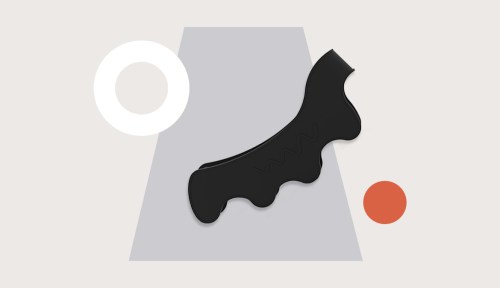Our editors independently select these products. Making a purchase through our links may earn Well+Good a commission
Your personal experience may have taught you that the only job of toe spacers is to keep your toenails from smudging post-pedi. (*Side eyes my jacked-up baby toe*.) But these days fitfluencers, exercise enthusiasts, and CrossFit Games athletes are using toe spacers to level-up their prehab, rehab, and performance.
Experts in This Article
board-certified podiatrist and human movement specialist, and global leader in barefoot science and rehabilitation at the Center for Functional and Regenerative Podiatric Medicine
Stephanie Carter Kelley has been a physical therapist, educator, and researcher for more than 30 years. She is also a yoga instructor.
Wondering how the heck giving your toes a little breathing room could help you athletically? We called up Emily Splichal, DPM, a functional podiatrist and CEO of recovery brand Naboso, and Stephanie Carter Kelley, PhD, a board-certified specialist in orthopedic physical therapy and a Hatha yoga instructor. They explain the noise behind the tootsie trend, and share what you need to know to get started with your own toe spacer routine.
What are toe spacers?
Also known as toe spreaders or toe separators, these tools look nearly identical to the cheapo kind the pedicurist weaves between your to-be-painted toes. And indeed, some are made of the same squishy styrofoam material you see at the salon. But more often these toe spreaders are made of stretchy silicone.
Put simply, they are designed to undo the damage that modern-day shoes inflict on our feet. Naturally, our toes are meant to spread freely and widely, explains Dr. Splichal. For proof of just how mobile our toes are supposed to be, take a peek at some baby feet. Beyond being cute, those little toes are super flexy!
Unfortunately, our feet lose that flexibility after spending hours upon hours upon years (!) in slim-fitting shoes. “Most flats, loafers, and athletic shoes are literally designed to be narrower than the shape of the human foot,” explains Dr. Kelley. “So even people who have a narrow foot are squeezing into shoes that are too narrow through the toe box.”
Over time, this restriction can cause mayhem in your feet, she says. “The muscles and joints become so tight, stiff, and immobile that your feet can’t function optimally,” she says. “And that can lead to pain, not only in the feet but in the ankles, knees, hips and low back.”
What are the benefits?
By separating your toes more than they’re used to, toe spacers gently stretch all the teeny-tiny muscles that surround and support the toes, says Dr. Splichal. When worn routinely, they can help return your feet and toes to their natural alignment.
And when your foot is back in its natural alignment? Any pain caused by joint and muscle misalignment and weakness can begin to subside. “Stretching the small muscles and ligaments around the toes and forefoot can be especially beneficial for conditions like hammertoes and neuromas,” says Dr. Splichal. People with bunions may also notice relief from toe spacers, she adds.
Beyond rehabbing and prehabbing foot and toe injuries, Dr. Kelley says toe spacers can also help people reach their athletic potential. “When your toes can move as they’re designed to naturally, you’re physically able to lift the arch of the foot,” she explains. “And when the arch is lifting the right amount and at the right time, the foot is able to transmit forces up the rest of the leg.” The result? Greater power during any kind of sport that requires running, walking, or jumping. Hello, PR!
Exactly how to get started using toe spacers
“Toe spacers can be beneficial to everyone,” says Dr. Splichal. After all, unless you’re a surf instructor or nomadic beach babe who loves the sand between their toes, you probably spend the majority of your day in foot casts (er, sneaks or heels).
First order of operations: Find a set. A pair from brands like Jeobest Mind Bodhi or The Toe Spacer won’t put you out more than 12 bucks. “But you don’t need special equipment,” says Dr. Kelley. “You can even just take a sock and weave it in and out of your toes.” Noted.
How should you start using toe spacers? Slowly. Begin with just 5 to 20 minutes per day, suggests Dr. Splichal. Longer than that can sometimes be irritating to the toes. So, set a timer and “wear them while you watch TV, sit at your desk, or even at night to provide a low load stretch,” Dr. Kelley suggests.
As your toes adjust to the sensation and manipulation, you can gradually build up daily wear. Assuming there’s room in the toe-box of your shoes, Dr. Splichal actually recommends wearing them in your shoes at work or while you work out. (Note: If you’re really committed to this, you may need to order a pair of wide sneaks. Reebok, Brooks, and New Balance are all known for being wider-set).
Remember that pain is the body’s way of signaling that something is wrong, so if you start to feel discomfort, take ’em off. This is especially important if you have hammertoes, bunions, or any other underlying foot condition.
Finally, in case you need to be told to do so: Wash your toe spacers regularly. Failure to clean them can lead to odor and bacterial build-up, says Dr. Splichal. Ick. If your specific set has cleaning instructions, follow those. But soap and warm water will usually do the trick.
Oh hi! You look like someone who loves free workouts, discounts for cutting-edge wellness brands, and exclusive Well+Good content. Sign up for Well+, our online community of wellness insiders, and unlock your rewards instantly.
Sign Up for Our Daily Newsletter
Get all the latest in wellness, trends, food, fitness, beauty, and more delivered right to your inbox.
Got it, you've been added to our email list.











